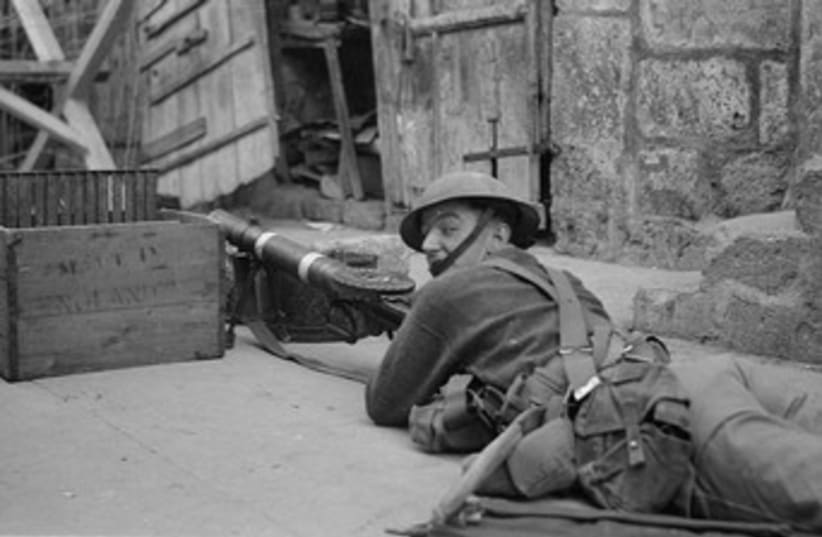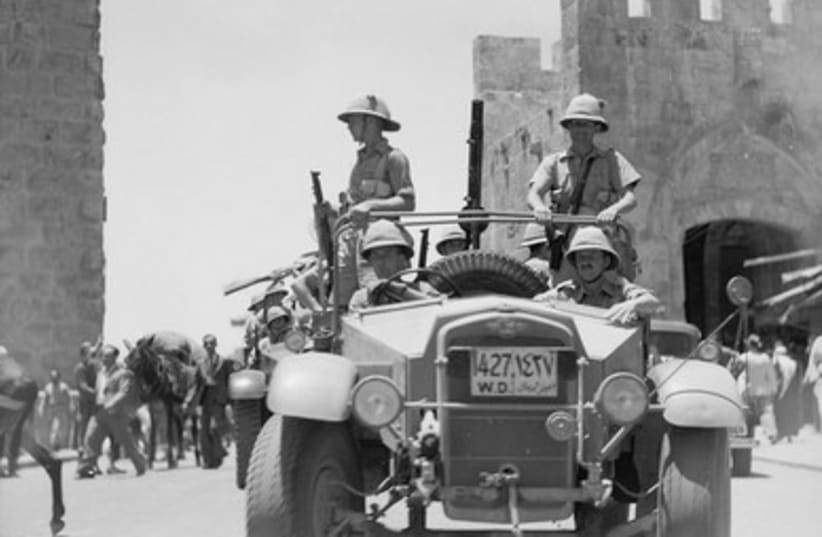
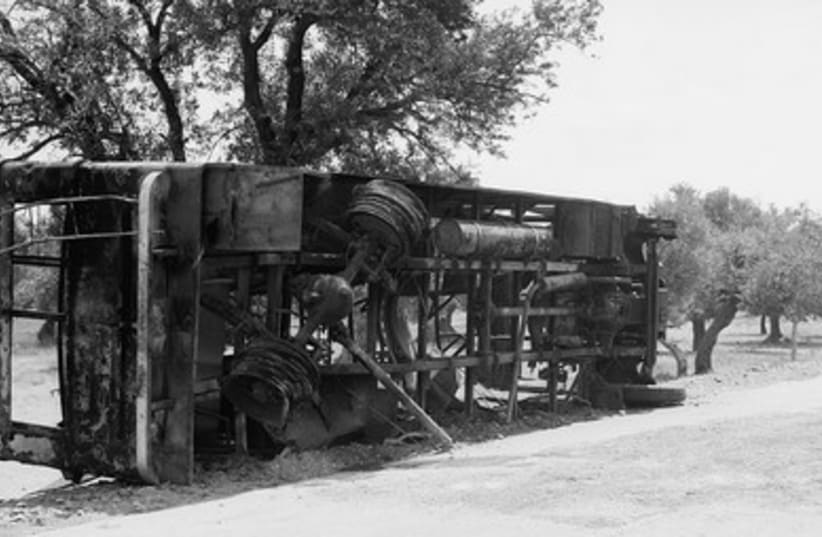
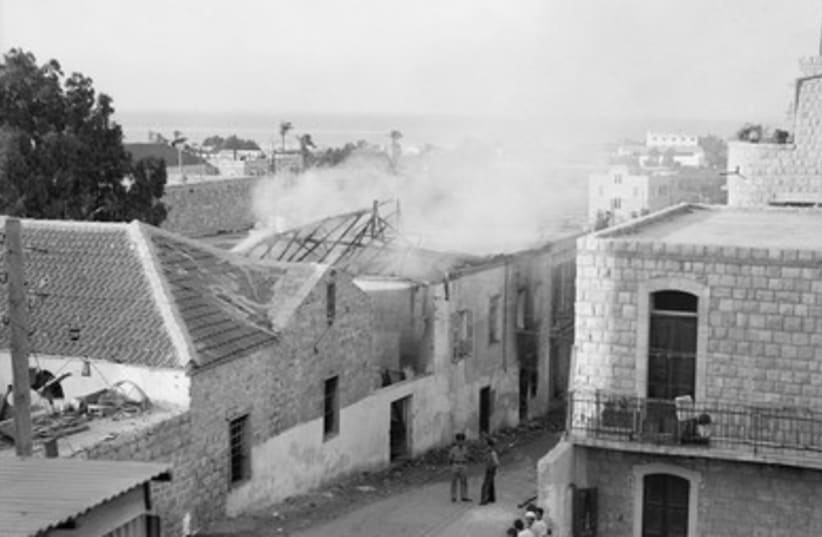
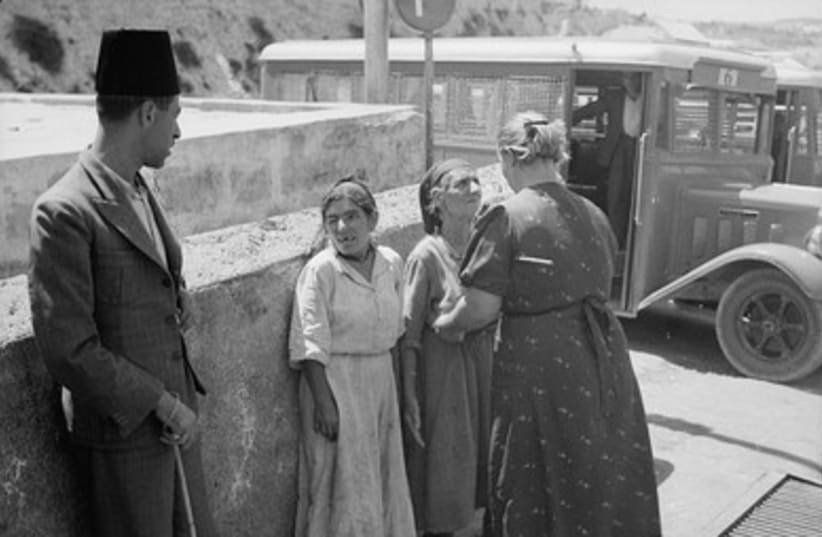
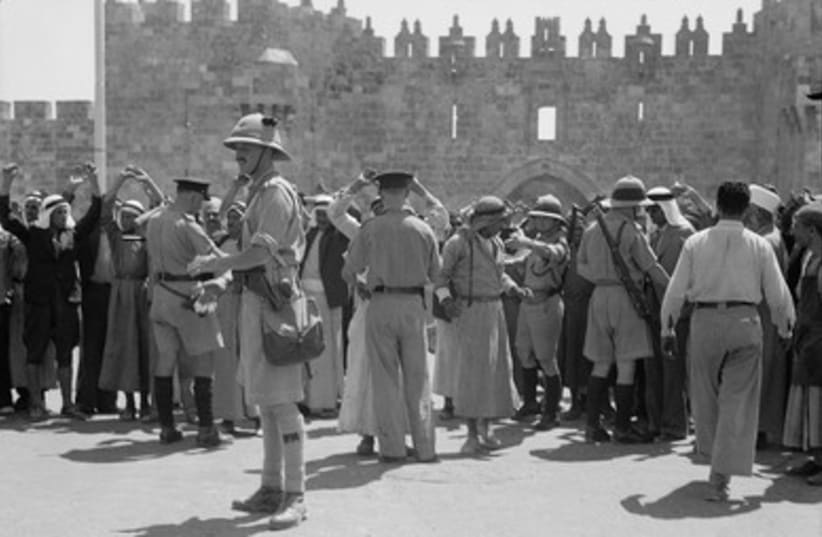


The Arab Revolt in Palestine (1936-1939) was a full scale attack against the British Mandate, the Jewish community, and other Arabs who didn't support the radical leadership of Haj Amin el Husseini. Details of the Arab revolt and the British counter-insurgency are recorded in the British Mandate's annual reports.The photographers of the American Colony were not news photographers, but they recorded the violent and bloody events of the Arab attacks across Palestine. Hundreds of these pictures can be found in the Library of Congress archives. We present below excerpts of the British Mandate's 1938 report matched for the first time with a selection of the relevant American Colony's pictures.During 1938 public security in Palestine, particularly during the seven months from June onwards, continued to cause the administration grave preoccupation. An intensified campaign of murder, intimidation and sabotage persisted on lines similar to those followed by Arab law breakers in 1937; and, as in 1937, there were incidents of Jewish reprisals. The main difference between the course of events in 1938 and that in 1937 lay in the gradual development during 1938 of Arab gang warfare on organized and to a certain extent co-ordinated lines. By the end of the year, as the result of the arrival in the autumn of large military reinforcements, this gang organization was first dislocated and finally reduced to comparative impotence in the field. But in the towns terrorism persisted and the roads were still largely unsafe for normal traffic. In fact, the events of 1938 succeeded in seriously affecting the economic and social life of the country to an extent far greater than was the case in 1937.In April there was also an increase in shooting incidents against police and military patrols and Jewish settlements; in cases of armed robbery in Arab villages and the sabotage and attempted sabotage of communications and Government property. For the first time for many months damage was done to Jewish groves and forests. Finally, the [Iraq-Haifa] oil pipe line was damaged on ten occasions.The month of July produced a series of major outrages which caused death to 100 Arabs and 27 Jews, and injury to 206 Arabs and 64 Jews.The two worst incidents occurred in Haifa when bombs exploded in the Arab fruit market in the center of the town on the 6th and the 25th of the month. The casualties were 74 Arabs killed and 129 wounded. On both occasions confusion followed the explosions and there ensued short periods of rioting and violence in which 10 Jews lost their lives and 27 were injured. Between these two outrages, also in Haifa on the 10th July, a bomb thrown at a Jewish bus killed one Jew and wounded 15 others; and in a street fracas on the 11th two Jews were killed and 14 Jews and one Arab were wounded. In Jerusalem there were three serious bombing incidents, two in the Old City when 13 Arabs were killed and 35 wounded and one outside the Jaffa Gate when five Arabs were killed and 25 wounded. In addition, isolated attacks within the municipal area resulted in several Arabs and Jews being killed and many more wounded.During the month of August sabotage persisted on an enhanced scale. The damage to the telephone and telegraph system throughout the country was assessed at more than P.6,000, while six trains were derailed.In September, the casualties among the British troops and police, Jews and Arabs (excluding bandits) reached the formidable total of 188 killed and 156 wounded. In addition, rebellious activities, probably encouraged by the crisis in Europe, were more widespread than in previous months. In almost daily encounters with the troops and police the bands are known to have suffered total casualties of at least 311 killed.In October the Old City of Jerusalem, which had become the rallying point of a large number of bandits and from which acts of violence, murder and intimidation were being organized and perpetrated freely and with impunity, was fully re-occupied by the troops on the 19th of the month.More photos can be viewed at http://www.israeldailypicture.com.
